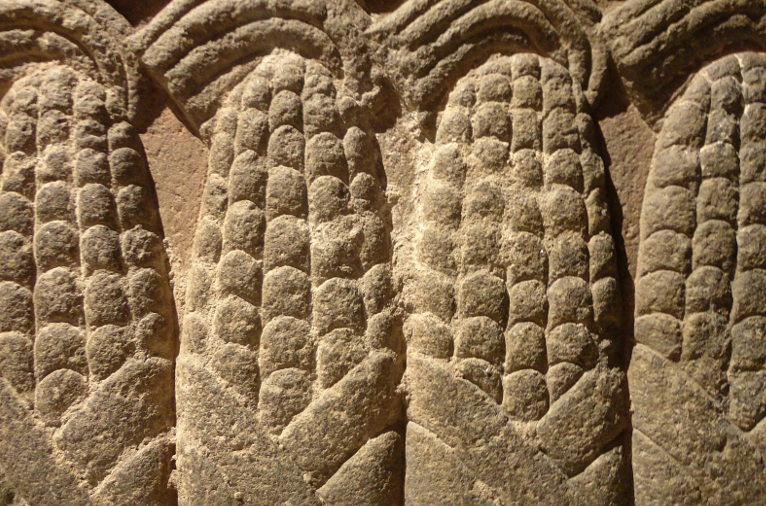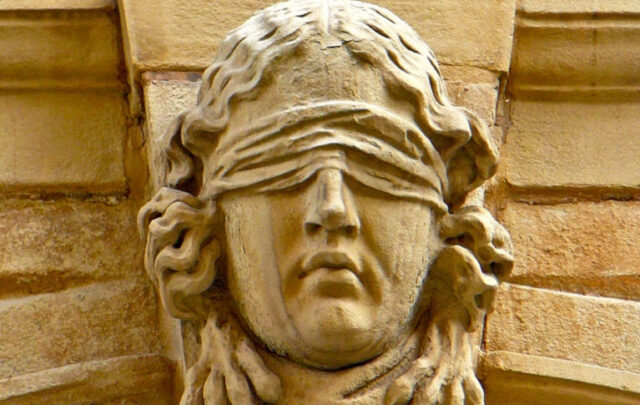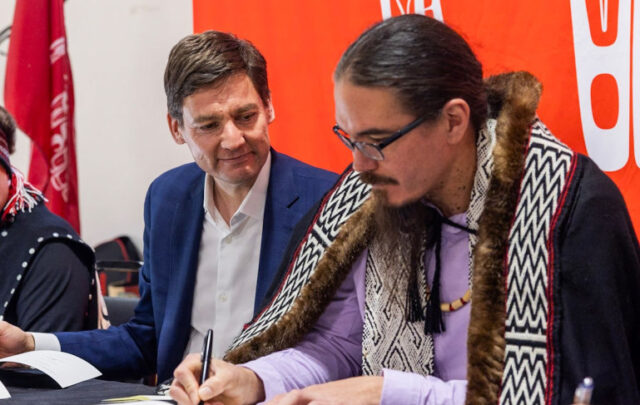In the beginning, there was Selu. She was the first woman, made from a corn plant. The Cherokee goddess was killed by her twin sons, who feared her power, but her dying instructions taught her family how to grow corn so they might survive and so her spirit would live on, resurrected with each harvest.
This story is told by Morgan Crisp, who is Cherokee, over a pint of blonde ale put out by her brewery, 7 Clans, in North Carolina, near the eternal rolling hills of the Appalachian Mountains. Crisp and her husband, with their kettles and taps, fermenters and casks, are brewing this blonde ale—made with hints of corn to honor Selu—and other beers, to a growing fan base. Their brown ale, called “Bended Tree,” is a tribute to the navigational markers the Cherokee long used to find their way home.
“My story is told through my beers—as a woman, as a mother, as a Cherokee tribal member,” Crisp says. “I want to pass on all that I have learned.”
Crisp and other Native brewers are successfully making space for themselves, their voices, and their stories in today’s craft beer movement through lagers, sours, porters, and ales—to beer drinkers’ delight. These brewers are upholding their peoples’ pasts while looking to the future, glasses raised.
Crisp will soon be opening a new tasting room in beer-friendly Asheville, North Carolina. “I am doing it to preserve our culture our way,” she says. Non-Indians have propagated what they consider “Indian” for decades, using names, imagery, and more, without any base of knowledge nor ties to the Indians represented, she says.
“Who should tell our stories but us?”
Overcoming a History of Discrimination and Misrepresentation
“Like any group of people that have had their cultural identity stripped, land taken, the lack of resources for health care, food, and education, along with social prejudice, this creates an environment of stress and depression for any society that lacks hope,” says Ruth-Ann Thorn, chairman of the Rincon Economic Development Corporation, a tribal entity that oversees the Rincon Reservation Road Brewery, based in Southern California.
But hope is exactly what many Native-owned breweries are aiming to create in their communities, through economic activity and cultural exchange. For example, Rincon Reservation Road Brewery is offering up a blueberry saison named “Tuupash,” which Thorn says “means blue in our language,” and a hefeweizen called “Rez Dog” that Thorn says “speaks to the resilience of our people.”
The brewery is owned by the Rincon Band of Luiseño Indians, who have a 14,000-year documented history in what is arguably the craft beer capital of the United States today: San Diego. The brewery is currently working to open more taprooms in the city. Thorn says, “We hope to create a space where people can come grab a beer and learn about our rich history … our rich culture as the first people here.”
Though each Native-owned brewery’s story is distinctly different, they have much in common. For starters, there’s the problem of underrepresentation. Across the U.S., only 4% of breweries are owned by American Indians or Alaska Natives, according to a 2019 survey by the Brewers Association, in contrast to the 88% of brewery owners who are White. Further, women-owned breweries comprise just 2% of craft breweries, which has created an extra hurdle for Native women brewers to clear.
Another critical hurdle is access to capital. Though there can be many variables to consider, the cost of opening a brewery today generally falls between $500,000 and $1.5 million. Many aspiring Native brewers don’t have access to that kind of money, especially considering the ways generational wealth has long been denied to them. In addition, the lending market continues to be riddled with systemic racism, making it harder to get a loan.
Native brewers also face pushback, both internally and externally, because of the long-standing stereotype of Indians having a propensity for alcoholism and the myriad issues associated with it. According to American Addiction Centers, the rate of alcohol use among Native Americans is lower than among Caucasians, Hispanics, and African Americans. “The major concerns of alcohol use,” it states, “stem from the high rates of problem drinking and alcoholism among Native Americans.” Three in 10 Native Americans ages 18 to 25 report binge drinking, one in 11 report heavy alcohol use, and one in 10 have an alcohol use disorder.
While resorting to alcohol may be a natural response to the ongoing trauma—both individual and collective—that Native Americans have long faced in the United States, alcoholism continues to harm tribes and their members. And that can make a brewery a hard sell.
“There is doubt. There is fear with anything that is new and different,” says Linda Cooley, CEO of the Yurok Tribe’s Mad River Brewing in Blue Lake, California. She has been in the beer industry since she turned 21, following in the footsteps of her father, who worked for Anheuser-Busch. Cooley says Yurok tribal leaders had fears about the tribe owning a brewery, knowing the long-standing stigmas weren’t going away any time soon.
Mad River Brewing has now been in operation for more than 30 years, and it became wholly owned by the Yurok Agricultural Corporation in October 2019. “I have been dealing with [this pushback] my entire career,” Cooley says. “The majority of tribal members have been supportive. For the ones that disagree, I ask, ‘What can we do to be better?’”
With this intentionality, Native brewers like Cooley and Crisp are proof that craft beer can create success stories for their communities.
Telling Stories and Starting Conversations
“If you want to be able to tell your story the right way, you have to be willing to tell it,” says Jake Keyes, owner of Skydance Brewing in Oklahoma City, Oklahoma. Keyes, who is registered with the Iowa Tribe of Oklahoma and family with the Osage Nation and Otoe–Missouria Tribe, was recently named one of Native Business Magazine’s “Top 50 Native Entrepreneurs.”
During his youth, Keyes learned how to make beer from his father in their garage, poring over a tattered copy of Charlie Papazian’s The Complete Joy of Homebrewing. Together, the two reveled in the science and art of beer making. Then, Keyes’ father got sick, and sicker still. At a national homebrewing competition in Dallas in 2013, young Keyes won top prize using his dad’s recipe for an oatmeal stout. On the way home to celebrate the victory with his father, his father passed away.
“It showed me,” Keyes says, “how short life can be and how we need to make it count.”
So, alone, Keyes pursued his and his father’s shared dream to start a brewery, which he established in 2018. One of the beers on tap is his father’s oatmeal stout.
Keyes also makes an IPA called “Fancy Dance,” which he says prompts many conversations among his customers.
“It causes people to ask questions. It demystifies us,” he says. “People ask me, ‘How do I get invited to a powwow?’” he says. “You just come.”
“If we don’t communicate with each other, there’s misunderstanding and bad assumptions,”
Keyes says, which is why the Skydance Brewing logo features two feathers coming together. He wants his beers to bridge gaps, and his approach is proving successful, both for growing the company and its social impact. In 2020, Skydance Brewing brewed around 300 barrels; this year, they’re planning on brewing 2,000 barrels.
“Good craft beer brings good people together,” he says.
Brewing Local Economies and Social Movements
This Native activism goes beyond conversations and connections over beer names.
On Indigenous Peoples Day in 2021, Bow & Arrow Brewing in Albuquerque, New Mexico, announced a Native Land Beer Campaign. The brewers developed an IPA and shared the recipe, the idea being that participating breweries would make the IPA and then package their cans with a label acknowledging the ancestral land on which the beer was brewed. Bow & Arrow’s beer, for example, is made on the land of the Tiwa people.
By early December 2021, just days after the announcement, 30 breweries from seven states had already signed on.
The same acknowledgement is a central tenet of Mad River Brewing in California. “We put the name Yurok on every can,” Cooley says, so that whoever purchases it, whether it be at Costco, Safeway, or a local bottle shop, “knows who we are.”
With some 5,000 members, the Yurok Tribe is the largest in California. The Yurok are one of the few tribes in the U.S. that weren’t forced onto reservations, so they still live on their ancestral lands today. The Klamath River winds near; the redwood trees stand tall; the Pacific Ocean air is fragrant. But this isn’t just a historical, primeval place.
“I want people to understand,” Cooley says, “that we are here. We are a modern people. We are here living a normal life just like everyone else.”
Though the Yurok Tribe is the state’s largest by number, it is also one of the most economically disadvantaged. Cooley wants to use the brewery to create jobs—not just in beer making itself, but coalescing around sales, advertising, and farming. She is now working with Ioway Bee Farm, tribally owned and operated by the Iowa Tribe of Kansas and Nebraska, to grow the ingredients Mad River Brewing uses for its beer.
Further, in an effort to raise awareness of the decades of damage caused by dams to the ecosystems of the Klamath River—including the all-important salmon that are a central component of the Yurok food system—Mad River has started making hard seltzers, including one called “Undammed.” The seltzer, Cooley says, is a tribute to the tribe’s efforts to remove the dams, which will soon be paying off. A number of the dams on the Klamath River will be dismantled in the next year or two, becoming the largest dam removal project in American history.
The brewery’s positive influence will soon be extending as far as Oracle Park, the home of the San Francisco Giants baseball team. Through a partnership with the Yurok, Mad River beers will be available during the 2022 season—the first tribal beer in a professional stadium.
“There have been dreams that at one time seemed unreachable; finding a tribal product for sale in a professional stadium was unheard of—until now,” Cooley says. But thanks to the brewery’s efforts, the baseball fans who drink their beer “are assisting in the fight for water, land, and for our story to be told.”
Teaser photo credit: Ancient Mesoamerican relief, National Museum of Anthropology of Mexico.. By Juan Carlos Fonseca Mata – Own work, CC BY-SA 4.0, https://commons.wikimedia.org/w/index.php?curid=81224187





